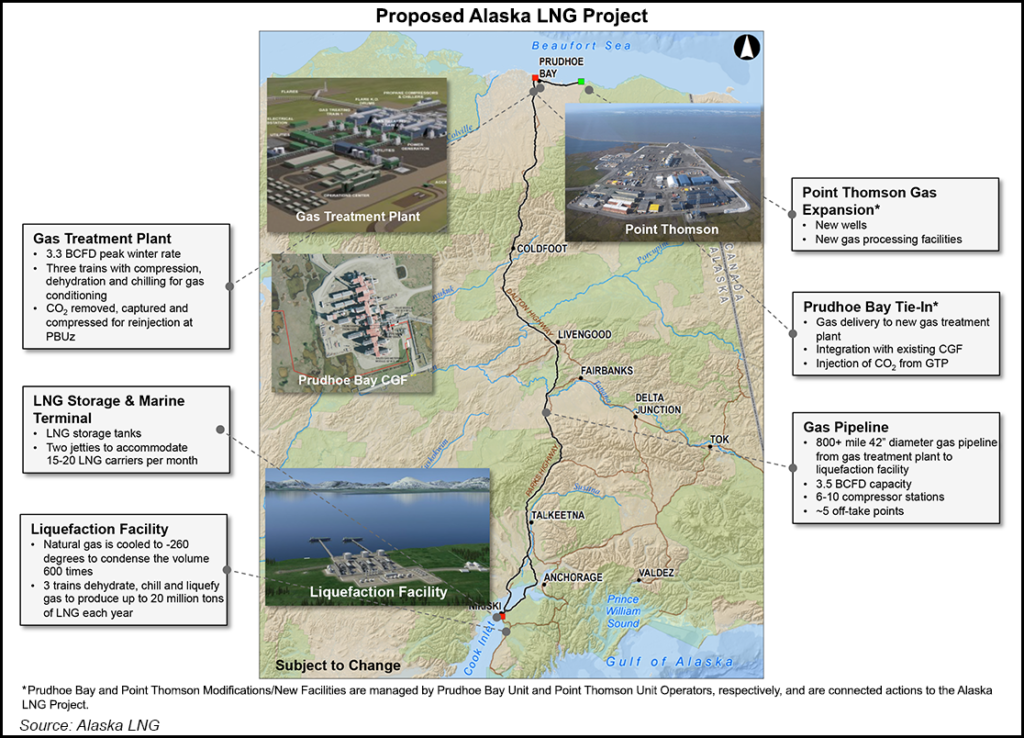[ad_1]
The U.S. Division of Vitality (DOE) reaffirmed its choice authorizing the Alaska LNG mission to export the super-chilled gasoline, however would require the power to restrict carbon dioxide (CO2) emissions.

The DOE ordered the situation after a problem from the Sierra Membership and different environmental teams that oppose the mission. As a part of the export authorization issued in 2020, the company will now require the mission to certify in its month-to-month report that no CO2 is vented through the manufacturing of liquefied pure fuel. CO2 might solely be vented within the occasion of an emergency, upkeep or operational points that may require it.
“DOE believes that this venting prohibition will cut back emissions of greenhouse gasses from the Alaska LNG Undertaking past what might have occurred underneath the Alaska LNG order,” the company mentioned in its order amending the authorization.
The modification was advisable by the Sierra Membership, however the group, together with the Heart for Organic Variety and Earthjustice, decried the DOE’s choice to let the power’s export authorization stand. In a press release, the teams mentioned the mission is pointless, would threaten wildlife and exacerbate local weather change. The Sierra Membership mentioned it “would pursue each out there avenue to make sure that this ill-advised mission isn’t constructed.”
State-owned Alaska Gasline Growth Corp. (AGDC) is creating the two.6 Bcf/d export mission that may be positioned in Nikiski on the Kenai Peninsula in southcentral Alaska. The estimated $39 billion mission continues to be unsanctioned and has been underneath growth for greater than a decade.
AGDC took over as sponsor in 2016 after associates of BP plc, ConocoPhillips and ExxonMobil dropped out.
Alaska LNG mentioned DOE’s newest order provides to “the report of help” for the mission.
“Alaska LNG will present Alaskans and U.S. allies with a big supply of low-emissions, responsibly produced vitality according to worldwide environmental priorities,” the corporate mentioned in a press release on social media.
The mission additionally features a pure fuel therapy plant and a proposed 800-mile pipeline to move fuel from the North Slope to the liquefaction facility in Nikiski. If constructed, the mission could be far nearer to finish markets in Asia than different U.S. LNG terminals on the Gulf Coast.
AGDC spokesperson Tim Fitzpatrick mentioned the Arctic Carbon Seize Plant, already within the mission design on the North Slope, was designed to segregate CO2 from the fuel stream and make it out there for enhanced oil restoration or sequestration.
AGDC additionally signed an settlement final yr with Mitsubishi Corp., Toyo Engineering Corp. and Hilcorp Alaska to check the feasibility of storing CO2 within the state’s Cook dinner Inlet basin.
[ad_2]
Source_link












